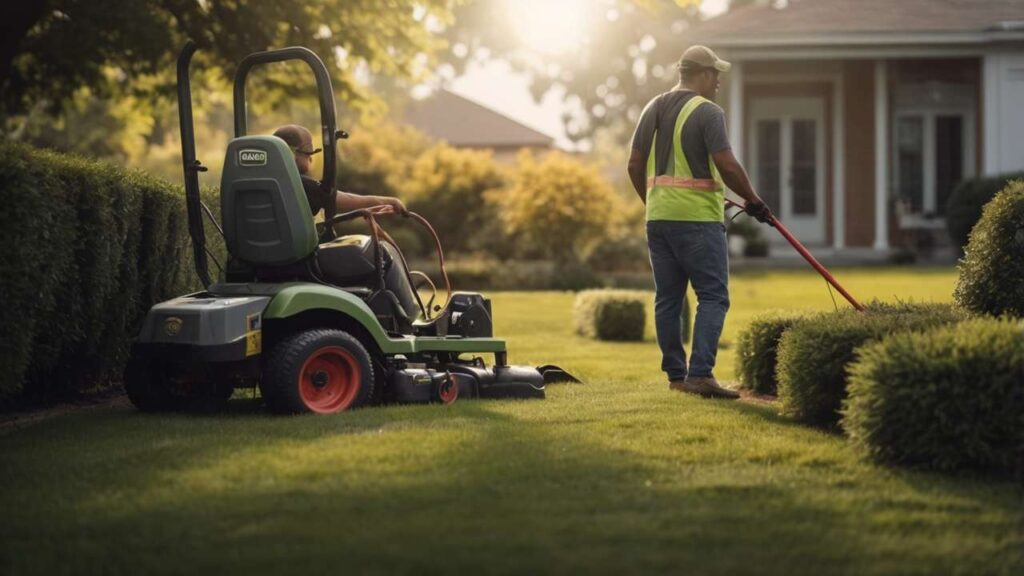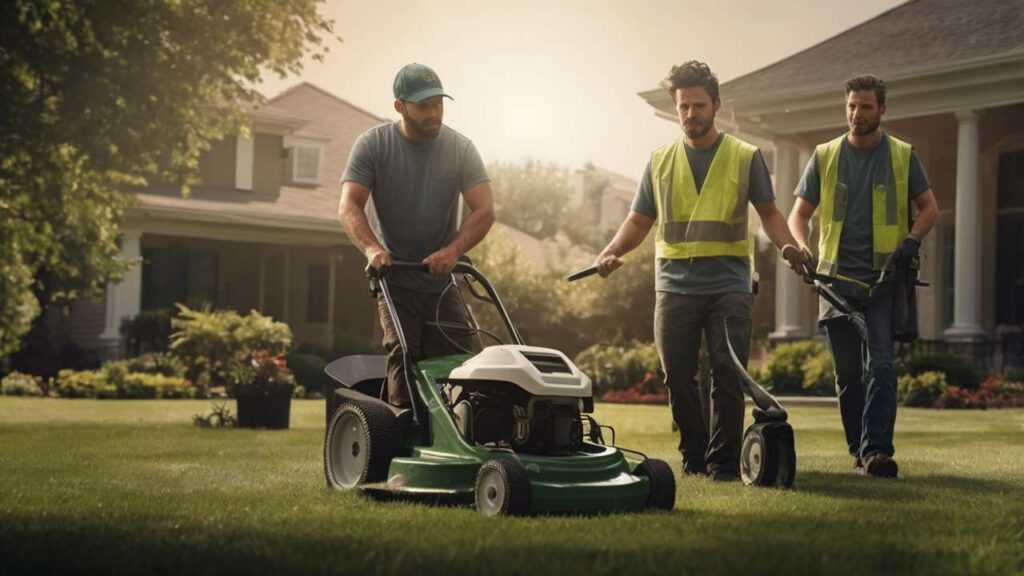A lawn isn’t healthy just because it looks green for a few weeks in spring. The truth is, inconsistency is the number-one reason homeowners struggle with turf that looks great one season and patchy the next. A professional lawn care schedule, built around a year-round lawn care schedule rather than a quick fix, is the difference between short-lived results and long-term turf success.
Inconsistent care has a way of sneaking up on you. Skipping aeration one fall or ignoring that early-spring fertilization doesn’t seem like a big deal, but the effects show up later as thinning grass, more weeds, or even soil compaction. As one turfgrass specialist once put it, “Grass doesn’t fail overnight—it fails slowly, through neglect.” That’s why homeowners who stick to an ongoing maintenance program—with fertilization, seeding, aeration, and seasonal adjustments—almost always see healthier, more resilient lawns year after year.
I’ve personally seen neighbors pour money into new sod only to watch it wilt by summer because they treated lawn care like a one-time project. On the other hand, the family across the street kept up with a seasonal fertilization plan, routine watering, and even a late-fall aeration. Their yard became the “model lawn” of the neighborhood.
Spring: Setting the Stage for Growth
Spring is the lawn’s wake-up call. The ground thaws, roots come alive, and your turf needs the right nutrients to build strength before summer stress hits. A spring lawn treatment typically includes nitrogen-rich fertilizer, pre-emergent weed control, and sometimes overseeding if winter left bare spots.
Professional lawn services often start this season with a soil test. As highlighted in Decoding Your Dirt: Why Soil Testing and Aeration Are the Foundation of a Healthy Lawn, understanding soil pH and nutrient levels is crucial. If your soil is acidic, lime may be added. If nutrients are low, customized fertilizer blends can be applied.
Spring is also the best time for seeding cool-season grasses. Overseeding fills in patches and creates denser turf that naturally fights off weeds. Professionals use slit seeders for better soil contact, but homeowners often scatter seed by hand, which works less effectively.
One small mistake I made personally was overseeding too late into the warm weather. The seedlings sprouted, then dried out quickly. Timing is everything in spring, and that’s why a structured professional lawn care schedule makes such a difference.
Summer: Protecting Against Stress
By summer, the game changes. The heat stresses turf, and water management becomes the most important factor. Lawns should get about one inch of water per week, but how that water is applied matters. Experts recommend deep, infrequent watering to encourage deep roots rather than frequent, shallow sprinkling.
Consistent mowing at the right height is another summer survival tactic. Many professionals suggest keeping grass slightly taller in hot months to shade soil and reduce evaporation. Cutting it too short—scalping—weakens the plant and invites weeds.
This is also the season for vigilance against pests. In The Ultimate Guide to Weed and Pest Control: Identifying and Eliminating Common Lawn Invaders (https://proservicetips.com/lawn-care-services/the-ultimate-guide-to-weed-and-pest-control-identifying-and-eliminating-common-lawn-invaders/), you’ll find how chinch bugs, grubs, and crabgrass thrive in summer. Professional treatments can break pest cycles, saving lawns from widespread damage.
Fall: The Season of Recovery
Fall is perhaps the most underestimated season in lawn care. Yet, experts consistently emphasize its importance. Fertilization in autumn feeds the roots, not just the blades, creating stronger plants ready to survive winter.
Fall aeration is another key step. By pulling out small plugs of soil, aeration relieves compaction, improves water penetration, and allows oxygen to reach the root zone. According to turf managers, the fall aeration benefits are most visible the following spring, when lawns grow thicker and greener.
This is also prime time for overseeding cool-season grasses. Paired with aeration, seeds fall into the soil holes, germinate more easily, and establish before the ground freezes. Think of it as setting your lawn up for success months in advance.
I once helped a friend with his DIY aeration—he rented a small core aerator, and honestly, it was exhausting to push around. That’s why many people prefer hiring trusted professionals who bring commercial-grade aerators and know the exact timing for local conditions.
Winter: Preparing for Dormancy
Winter lawn care may sound unnecessary, but preparation here ensures survival. Winter lawn preparation involves clearing debris, mowing slightly shorter before the first frost, and sometimes applying a winterizing fertilizer high in potassium. Potassium helps strengthen cell walls, protecting turf against cold damage.
Cool-season grasses go dormant but should still be protected from heavy traffic. Repeatedly walking on frozen turf can break grass crowns, leaving dead spots in spring. Warm-season grasses, meanwhile, may require different strategies, such as overseeding with ryegrass for green cover.
Professional lawn companies often use winter months to plan next season’s schedule, ensuring no step is skipped. That’s the essence of a consistent lawn care schedule: planning ahead rather than reacting to problems after they appear.
Why Consistency Outweighs Quick Fixes
One-off fixes like spreading fertilizer after weeds have taken over rarely succeed. A lawn is a system, and skipping steps in the cycle always shows up later. This is why Professional Lawn Care vs. DIY: A Complete Cost-Benefit Analysis (Time, Money, and Results) often leans in favor of professionals—not just for the convenience, but for the consistency of treatment.
A local professional lawn care company in North Carolina (https://proservicetips.com/lawn-care-services/professional-lawn-care-companies-in-north-carolina/) once explained that their success isn’t in secret products—it’s in sticking to the plan, season after season. Just like visiting a dentist regularly prevents cavities, maintaining turf regularly prevents weeds, pests, and costly repairs.
And the rewards go beyond aesthetics. As explored in The Curb Appeal Advantage: How a Healthy Lawn Increases Your Home’s Value and Lifestyle, a well-maintained lawn doesn’t just look better—it raises property value and creates a more inviting outdoor space for family life.
Expanding the Conversation
Every lawn tells a story, and as more homeowners learn the value of ongoing care, the conversation expands. For example, eco-friendly lawn programs are gaining interest, with organic fertilizers and pollinator-friendly practices becoming part of schedules. Others want to explore smart irrigation systems, which use sensors to deliver precise water amounts, saving money and conserving resources.
There’s also the often-overlooked topic of lawn care for shaded areas, where grass struggles under trees, and specialized seed blends are required. Or renovating neglected lawns, where the process isn’t maintenance—it’s revival. These themes naturally grow out of the core message: lawn success isn’t about mowing alone, but about comprehensive, thoughtful care.
Real-Life Example: The Inconsistent Neighbor
A family in my neighborhood tried to manage their yard themselves. They fertilized once in spring, skipped summer treatments, and ignored aeration. The grass looked decent at first but became patchy by fall. Compare that to another neighbor who worked with a reliable lawn care specialist who followed a strict seasonal plan. The result? Lush, consistent turf that stayed green longer and bounced back faster after winter. The contrast was so obvious that one eventually hired the same company.
This small story mirrors countless others. Consistency wins every time.
FAQs
1. How often should a lawn be fertilized for best results?
Most lawns benefit from 4–6 feedings per year, timed with the seasons. Professionals often customize based on grass type and soil test results.
2. Is aeration really necessary every year?
In most cases, yes. Annual aeration relieves compaction, improves nutrient uptake, and supports healthier root growth.
3. Can DIY lawn care be as effective as professional programs?
It can, but it requires strict discipline, knowledge of local conditions, and investment in quality tools. Professionals bring expertise and consistency that DIY efforts often lack.
A lawn is never just grass—it’s part of your home’s identity. Going beyond mowing and committing to a professional lawn care schedule ensures year-round turf success. By focusing on seasonal strategies, staying consistent, and trusting experts, you create not just a lawn but a lasting outdoor space that thrives.
If this guide helped you understand the importance of consistency in lawn care, please share it with friends or neighbors using the social buttons below. And for more detailed insights, visit:
👉 Professional Lawn Care Companies in North Carolina
👉 Lawn Care Services Category
👉 Pro Service Tips Homepage



